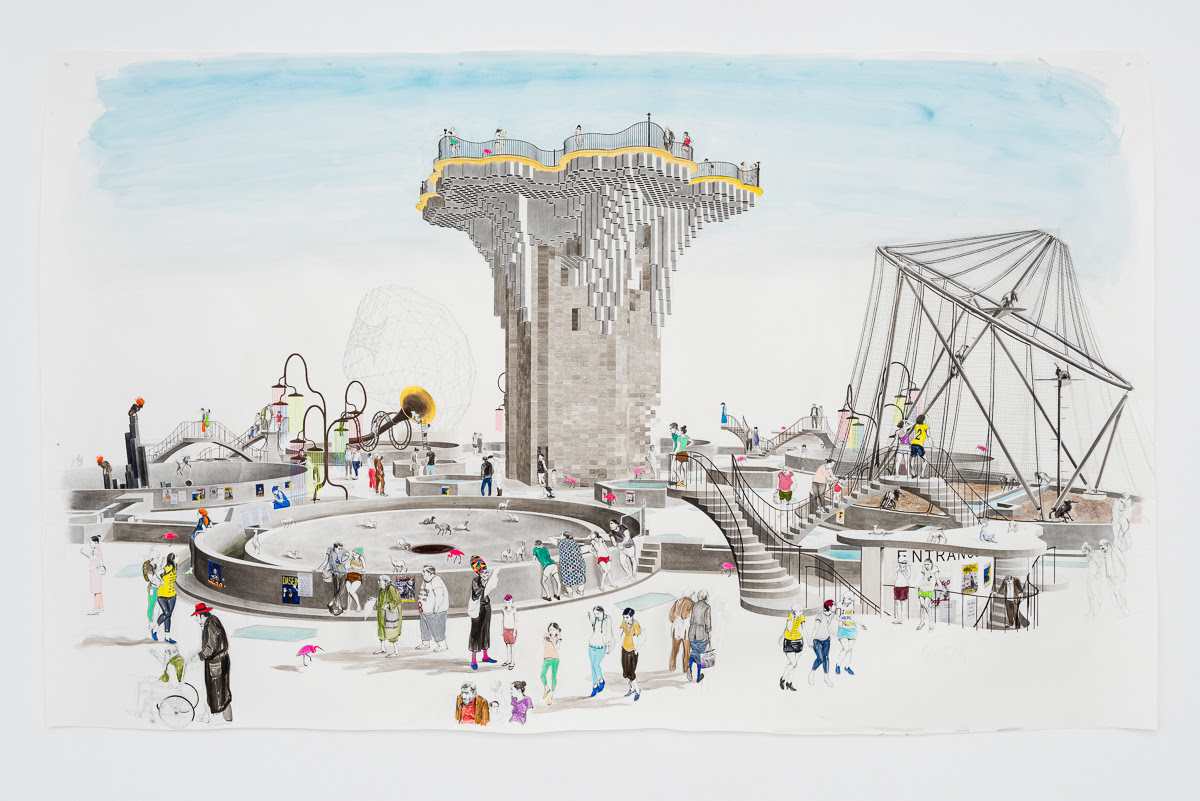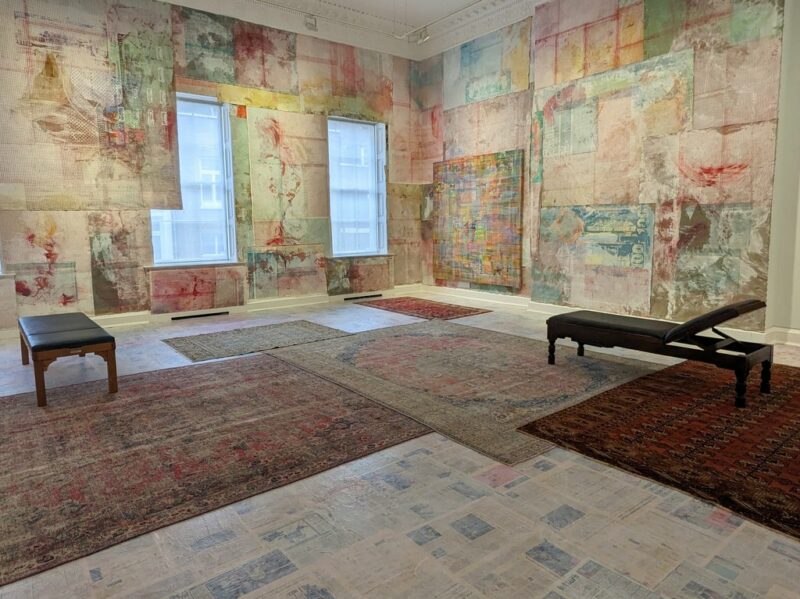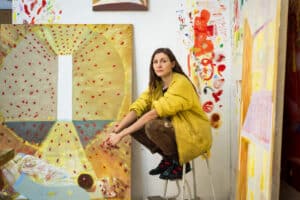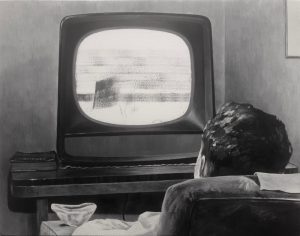Since 2004, the Scottish artist Charles Avery (b.1973, Oban) has dedicated himself to the invention of an imaginary island, new corners of which he continues to chart through drawings, sculptures, texts, ephemera and (more rarely) 16mm animations and live incursions into our own world. Known only as ‘the Island’, Avery’s wave-lapped realm is not only a vividly realised ction, teeming with sights both strange and strangely familiar, it also operates as a petri dish in which the artist tests ideas from the elds of epistemology, aesthetics, mathematics, economics, anthropology, architecture, and beyond. As Avery has said, the Island – with its fantastical ora and fauna, its eccentric cosmology and customs – is ‘a place that helps me to think’.

Image: Charles Avery, Untitled (Inner Circle, Onomatopoeia Zoo), 2016, copyright the Artist, courtesy the Artist and GRIMM Amsterdam | New York.
These Waters, Avery’s first major solo exhibition in the US, takes liquid as its organising principle, from the seas that surround the Island and its spiraling archipelago of islets (mapped on the dark orb of Islanders Globe (2017), to the draughts of liquor that lubricate philosophical debate in its numerous bars and pubs (poured, perhaps, from the bird-like neck of Untitled (Carafe) (2014). In a series of drawings, we see tourists from Triangland, an analogue of our own reality, bathing in the rock pools and sandy shallows that abut the Islands’ shores, their toes tickled by ‘ninth’ – sacred, eel-like creatures that might be understood as both the embodiment of the drawn line, and of the point where pure, mono-directional will converges with destiny. These creatures reappear in the sculpture Untitled (Pool) (2014), where their dark, glassy forms gather around a plughole in an ornate bronze tub, the centrepiece of the Island’s (determinedly inorganic) public gardens, the Jadindagadendar. Watched over by a curious egret, these primitive beings nose blindly about, trapped inside a universe-within-a -universe-within-a-universe, unable to respond to the instincts that propel them ever forward.
If the bathing tourists understand the ninth as vehicles for spiritual uplift (think swimming with dolphins), and visitors to the public gardens see them as objects of philosophical contemplation, for some poorer Islanders they are a natural resource that supports a hardscrabble economic existence.
Across several drawings, we see shermen gather up their catch of ninth and sell them, alongside alarmingly human- like sh named murpish, to customers on the Island’s quays. We might imagine these creatures served up at Avery’s Untitled (Square Circle table 8 seater) (2016), an example of the Island’s singular taste in domestic furnishings. A collision of two contrary forms, the circle and the square, its lozenge-shaped tabletop speaks, like many of the small details of Avery’s imagined world, to a perhaps irresolvable philosophical problem. Look closely, and we discover that table’s contrariness also extends to its steel base. Seen in plan, this is a perfect 2 x 1 rectangle. Walk around it, however, and a uid, circular waveform is revealed. As Edwin Abbott demonstrated in his classic satirical novella Flatland (1884), dimensionality – and by extension, what we understand as reality – is all a matter of perspective. We might remember this when looking at another furniture work, Untitled (Lantern) (2016). Beaming (or is that dripping?) from its bronze shade and clear acrylic tendrils, waves of light rarely feel this uid, this wet.
Charles Avery, These Waters 29 Oct – 03 Dec, 2017
GRIMM Gallery 202 Bowery, New York









